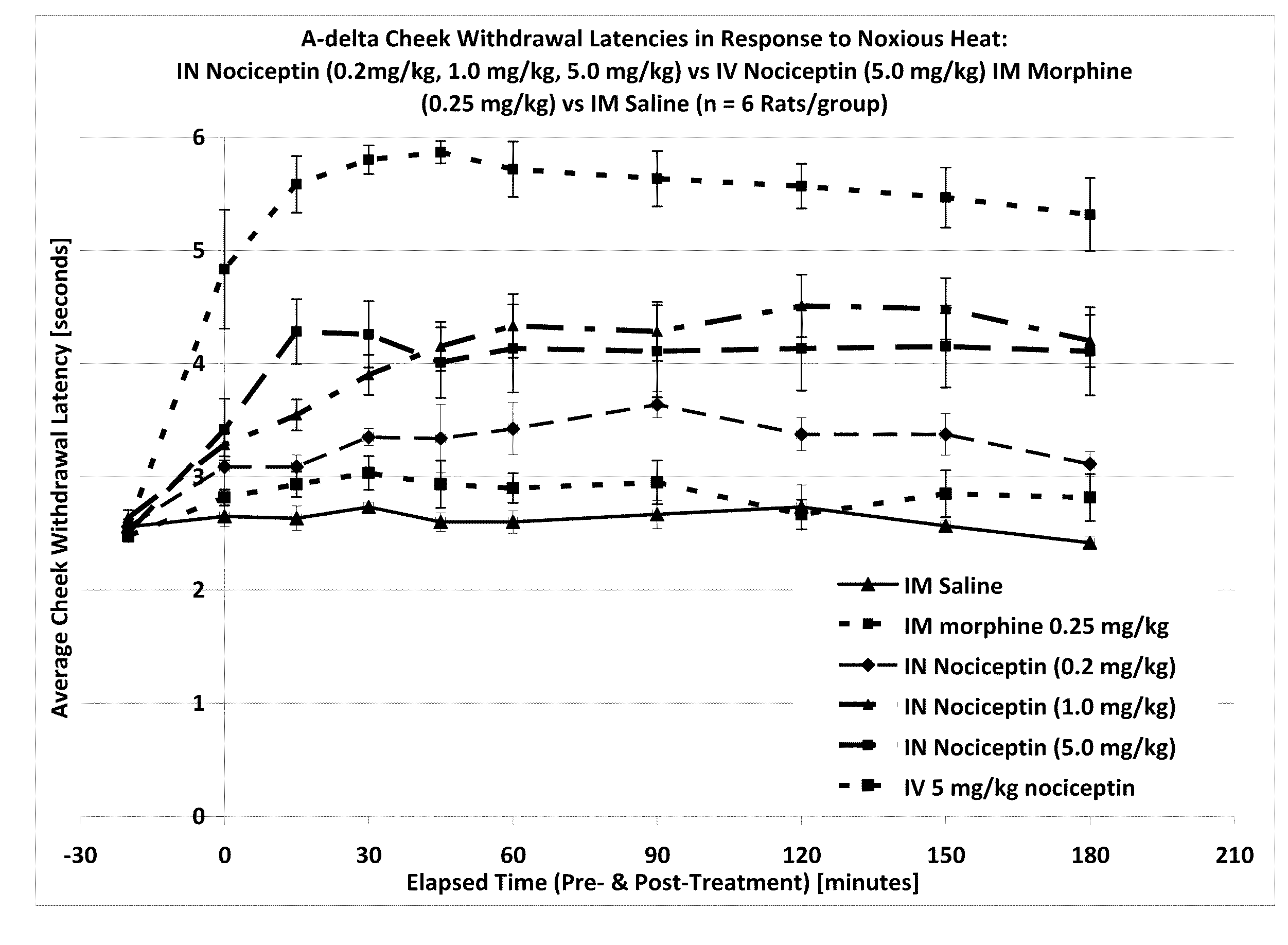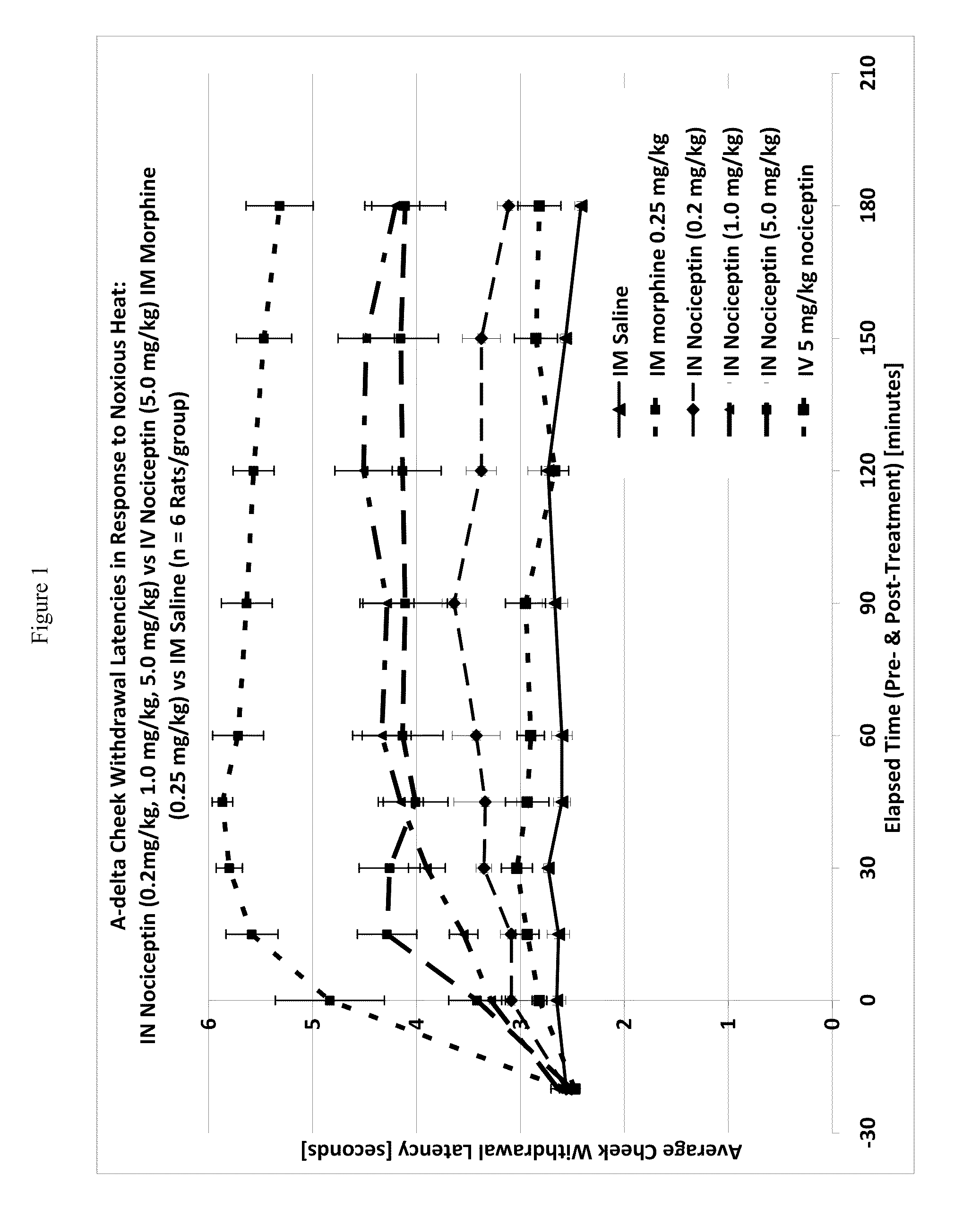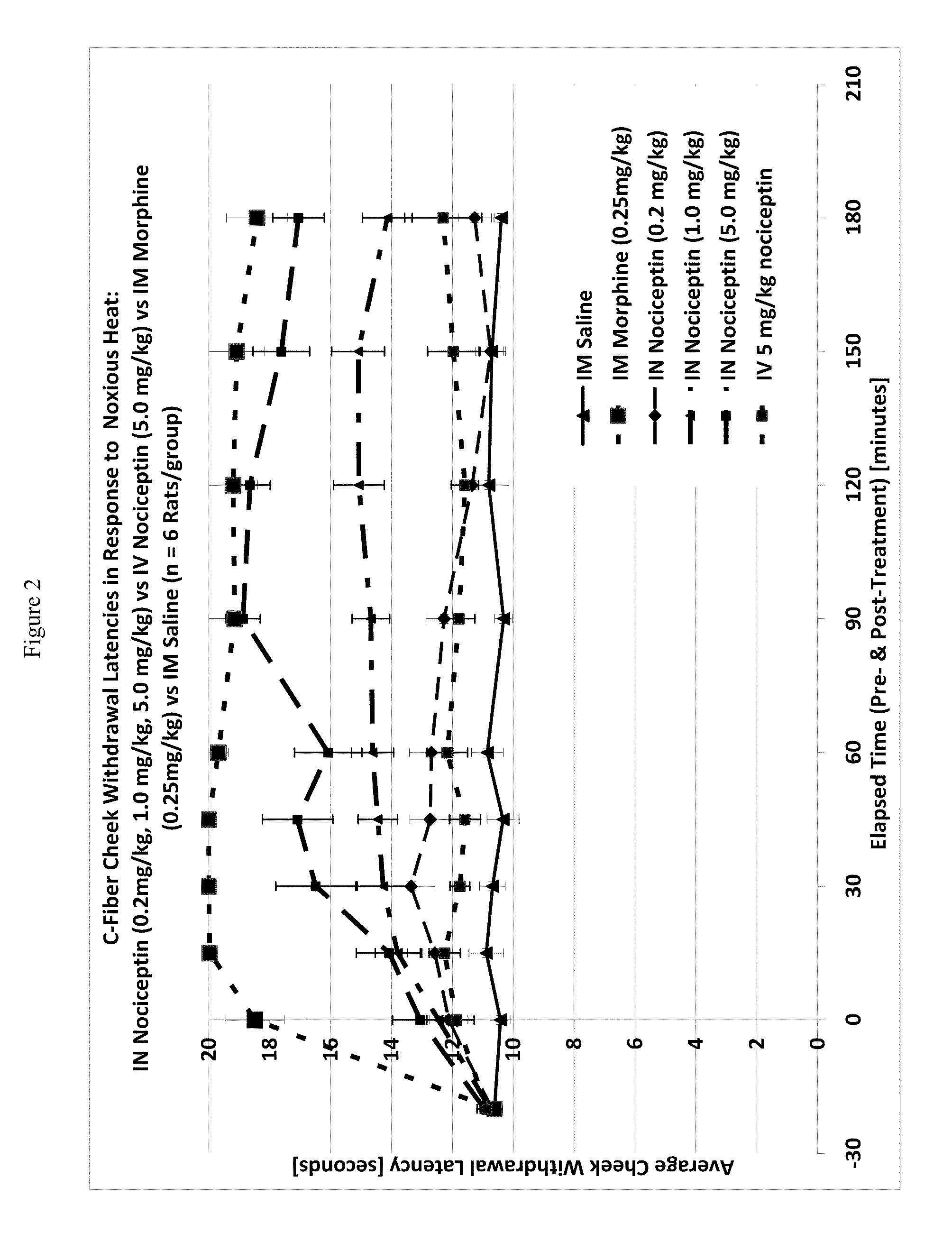Methods for treatment of pain
a pain and pain technology, applied in the field of pain treatment, can solve the problems of significant side effects, limited usefulness of morphine, and dependence, and achieve the effects of reducing pain, preventing pain, and reducing pain
- Summary
- Abstract
- Description
- Claims
- Application Information
AI Technical Summary
Problems solved by technology
Method used
Image
Examples
example 1
[0116]One way to test activity of an analgesic compound in a rat model is by treatment-induced changes in latencies (times) of withdrawal in response to noxious heating of the skin, typically using an ear, the face or a hindpaw. Thus, application of coherent or non-coherent (non-laser) radiant heat to the ear, the face or hindpaw will elicit rapid withdrawal movements. Latencies of withdrawal have been demonstrated to be sensitive to analgesic treatments, such that analgesics increase the latency to withdrawal. Transmucosal or transdermal administration of analgesic agents to the trigeminal nerve to reduce trigeminal nerve-associated pain can be tested for regional and / or global analgesic effects. The rostral external part of a rat's ear is innervated by a branch of the mandibular nerve, itself a branch of the trigeminal nerve. Thus after treatment, an increase in latency to withdrawal time would indicate regional analgesia. Similarly, a change in the latency to withdrawal time of t...
example 2
Effect of Intranasal Nociceptin on Thermal Nociception
[0120]A thermal nociceptive rodent model was used to determine the dose response relationship of intranasal nociceptin to 1) latency withdrawal, 2) duration of effect, and 3) to provide evidence for or against the hypothesis that the analgesic effects of i.n. nociceptin are mediated centrally.
I. Equipment and Materials
[0121]Nine male Sprague-Dawley Rats (200-300 g) per test run, nociceptin in saline (i.n. concentrations: 0.5 mg / ml, 5.0 mg / ml, 50 mg / ml), i.v. nociceptin (50 mg / ml), morphine (1.25 mg / ml), saline, urethane, A-delta / C algometer, timer.
II. Reference Documents
[0122]Yeomans, D. C. Pirec, V., and Proudfit, H. K. “Nociceptive responses to high or low rates of noxious cutaneous heating are mediated by different nociceptors in the rat: behavioral evidence”Pain (1996) 68:133-140.[0123]Sherman S. E, Loomis C. W. “Morphine Insensitive Allodynia Is Produced By Intrathecal Strychnine in the Lightly Anesthetized Rat”Pain (1994) 5...
example 3
Effect of Nociceptin Antagonist on Intranasal Nociceptin Induced Reduction of Thermal Nociception
[0143]This experiment was to verify the binding site of nociceptin induced analgesia in a thermal nociceptive rodent model.
I. Equipment and Materials
[0144]Nine male Sprague-Dawley Rats (200-300 g) per arm, nociceptin in saline (50 mg / ml), nociceptin antagonist (SB-612111 {(−)-cis-1-methyl-7-[[4-(2,6-dichlorophenyl)piperidin-1-yl]methyl]-6,7,8,9-tetrahydro-5H-benzocyclohepten-5-ol}, 100 mg / ml), saline, urethane, A-delta / C algometer, timer.
II. Reference Documents
[0145]Same references as in Example 2 and[0146]Chiou L C, Liao Y Y, Fan P C, Kuo P H, Wang C H, Riemer C, Prinssen E P. “Nociceptin / orphanin FQ peptide receptors: pharmacology and clinical implications”Curr. Drug Targets (2007) 8(1):117-35.[0147]Spagnolo B, Carra G, Fantin M, Fischetti C, Hebbes C, McDonald J, Barnes T A, Rizzi A, Trapella C, Fanton G, Moran M, Lambert DG, Regoli D, Cabo G. “Pharmacological Characterization of the ...
PUM
| Property | Measurement | Unit |
|---|---|---|
| threshold | aaaaa | aaaaa |
| dissociation constant | aaaaa | aaaaa |
| distance | aaaaa | aaaaa |
Abstract
Description
Claims
Application Information
 Login to View More
Login to View More - R&D
- Intellectual Property
- Life Sciences
- Materials
- Tech Scout
- Unparalleled Data Quality
- Higher Quality Content
- 60% Fewer Hallucinations
Browse by: Latest US Patents, China's latest patents, Technical Efficacy Thesaurus, Application Domain, Technology Topic, Popular Technical Reports.
© 2025 PatSnap. All rights reserved.Legal|Privacy policy|Modern Slavery Act Transparency Statement|Sitemap|About US| Contact US: help@patsnap.com



